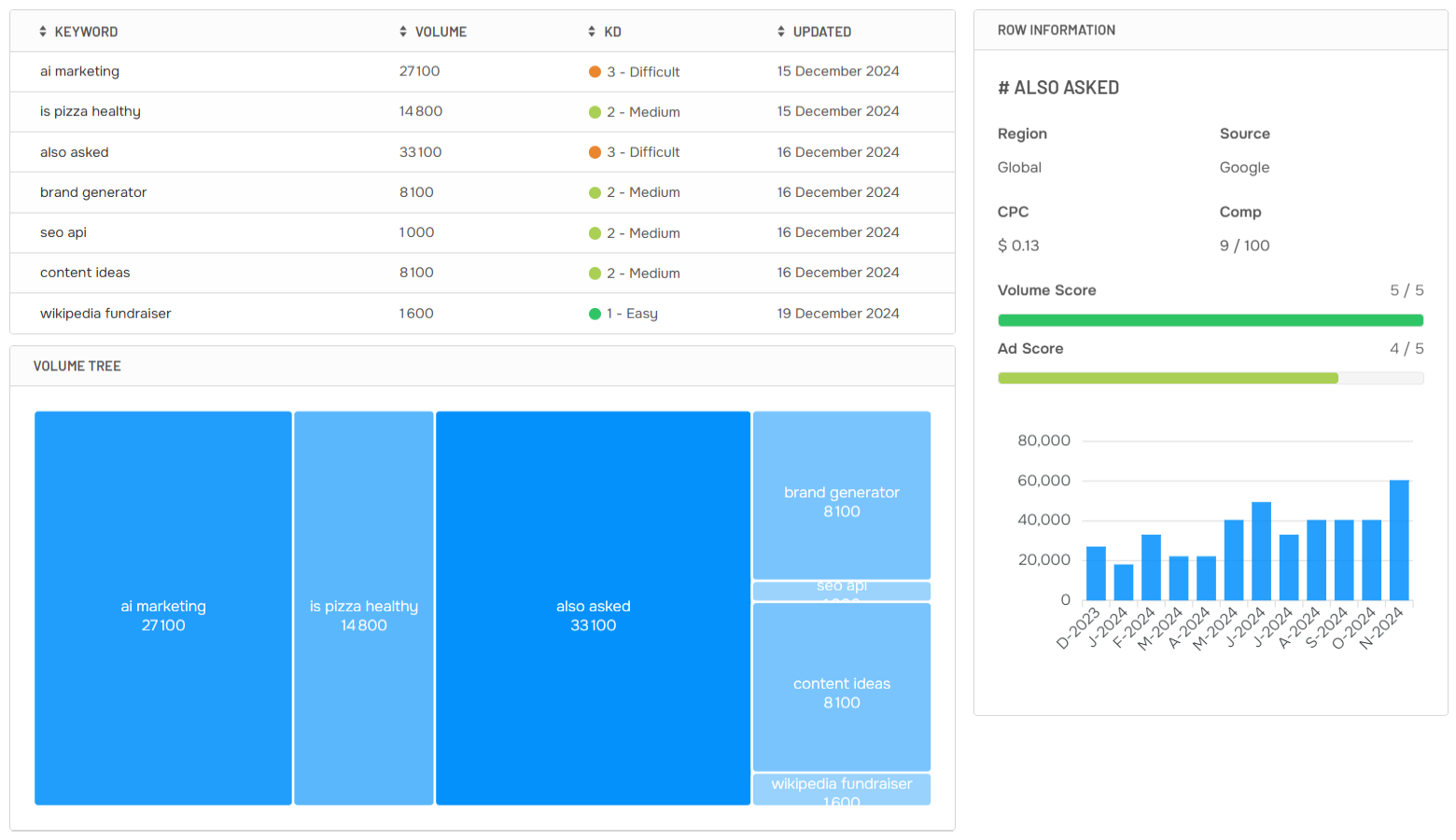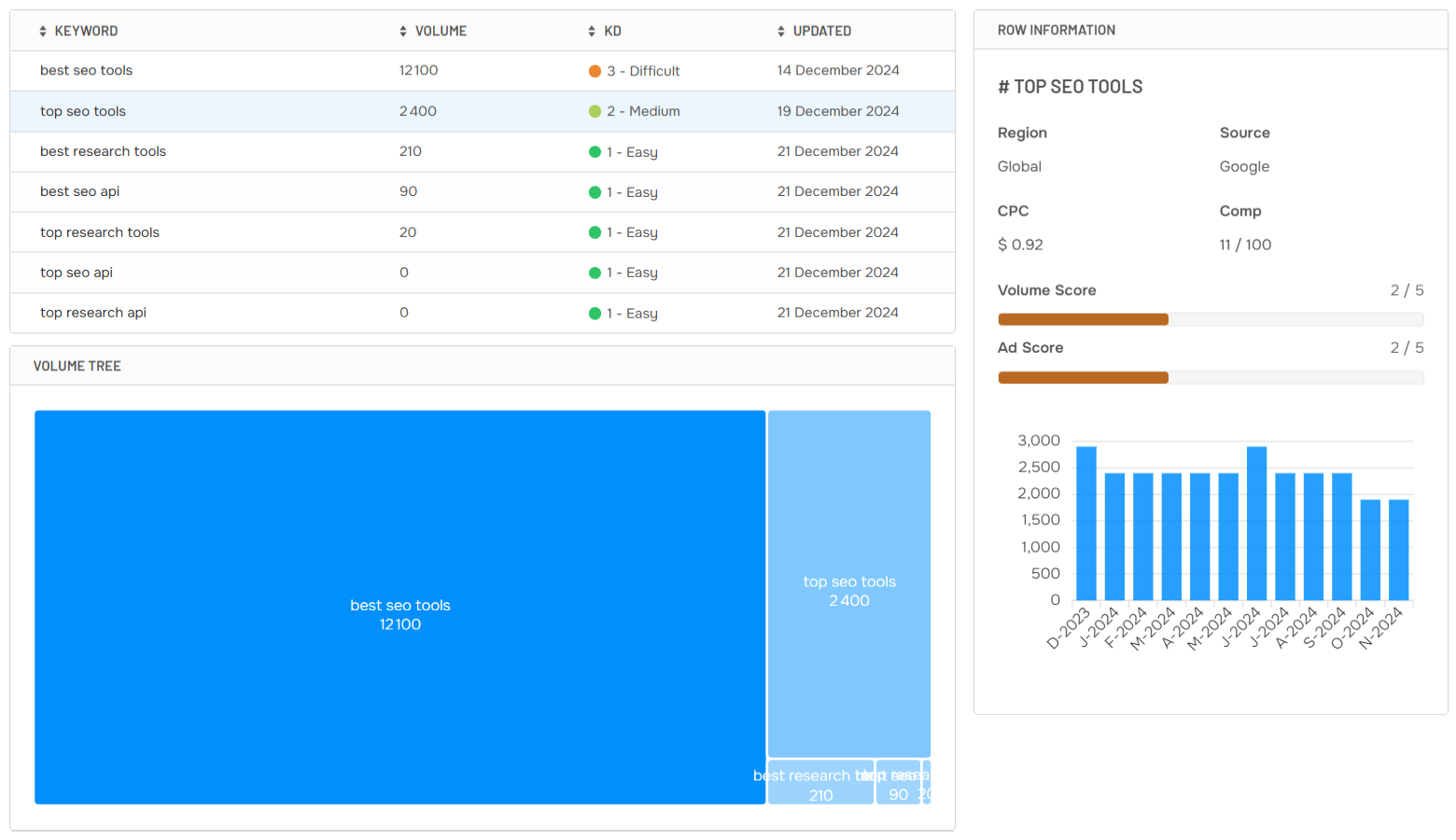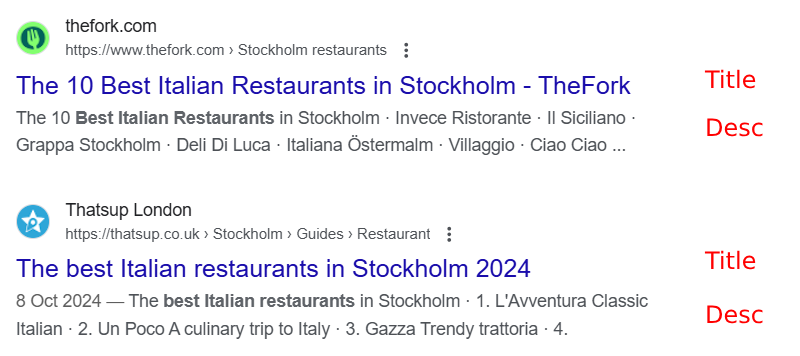SEO Keyword Research - A Beginners Guide
A short guide on how to research and use keywords to promote your content and increase incoming traffic.
Keywords are search phrases that are commonly used by users seeking information. They are typically used by search engines to denote the important parts of any search query, hence they term key. When you use any search engine, certain words are demoted or ignored altogether. These are stop words like for or a or the. The remainder of your query after processing is a set of words that shows the intent behind your search.
When working on an SEO strategy, what you're essentially doing is trying to target the specific search queries that other users of the search engine are looking for. It is therefore extremely important for you to target the right phrases in order to help people find your content.
In this guide we will cover how you can go about researching, and most importantly using, the keywords that your content should focus on.
There are multiple types of keywords. Each type focuses on a targeting a different subset of users. Here are some examples:
Short-tail: refers to "direct" search phrases that are usually highly contested. Ex: email marketing, insurance policy or sunglasses
long-tail: refers to "precise" search phrases. These are typically longer and therefore less users overall search for them. They are however much easier to target because of that. Ex: affordable wedding venues in Los Angeles, best price on running shoes or guide to starting a podcast on a budge.
Informational: refers to search queries for information acquisition. Ex: types of carrots, how to cook spaghetti, or what type of star is our sun.
Transactional: refers to search queries for item transactions. Ex: buy iphone 15, used cars for sale, or best real estate broker new york.
A keyword can be of multiple types. There are more types than mentioned above but in general, getting to know the difference between these 4 types will help you better understand your audience and their search habits.
Say that you run a tech blog and you'd like for your posts to reach a larger audience. You know that your potential readers are tech-saavy and care about domain specific jargon. Aimed with that knowledge you could potentially target long-tail informational search intent such as: how to install debian 12 on linux or alternatives to notepad for windows 10.
Selecting the right keyword and building the content around it is the difference maker. So how do we do that?
There are many strategies for finding potential keywords to build your content around. But without actual data to help you figure out what people search for and how often, it would be rather difficult to know what to focus on. Luckily, there are dozens of tools out there that are available for you to use.
Our JSONREPO platform for instance offers a wide range of solutions that can help you brainstorm ideas in no time using Google's internal data. The most basic functionality we offer is our keyword checker. It provides the following data points for each term you look up:
Volume: the number of searches made per month for the target phrase.
Difficulty: how difficult it is to rank higher up on Google search. Difficulty is a complex estimate that indicates how many other actors are trying to reach for that same target phrase as you and how likely it is for you to beat them.
Competition & CPC: how competitive it is to advertise for said target phrase and how much it would approximately cost per click.

Ideally you should target words that have high search volume with low difficulty.
Heads up:
A common beginner trap is trying to aim for high search volume without paying attention to difficulty. That can seriously backfire as the content you produce will end up ranking on the 3rd or 10th page of Google instead of first.
A good rule of thumb is: Aim for more than
1000 in volumeandEasy-Medium difficulty.
Merging is the act of taking smaller words and concatenating them into larger ones. This helps you explore a lot of opportunities in a short amount of time. For example: if we were trying to write an article about tools that you can use for your search engine optimization research, we could seed the merger with the following data:

As you can see, each word from the first list is merged with all the others from the second and third lists. And by asking for Google's search data, we can immediately see which search phrases are better to center the content around.
We offer a whole range of other tools including: keyword finder with 4 different modes and keyword extractor for already published websites. For the sake of brevity and time, we'll let you explore these on your own.
After you're done with your brainstorming and research session, you should have a handful of good phrases to target. Once you have that, you should start planning out your content.
First, make sure that the keyword(s) you've chosen are relevant to the content you're going to create and later on embed them into the content itself. This is typically called on-page SEO. The idea is to help Google and other search engine better understand what your content is about. The better they understand it the better it will rank. To maximize the impact you should consider adding the keyword to:
The title tag: page titles are extremely important as they indicate what the content is all about.
meta description tag: In addition to the page title, this is what people see when they search on Google.
h1 tag: The H1 or "main header" tag is an extremely important indicator that tells search engines what the page is about. You should have only 1 h1 tag per page.
URLs: try to structure your urls in a way that makes sense for the content. Example: {somesite}/blog/post-1234 will most often result in worse visibility than /{somesite}/blog/keyword.
Notice how most of the work involves helping search engines better understand your content. That's all SEO is after all.
You content should preferably also use the other header tags (h2 to h6). They are obviously less significant but try to include them to structurally mark for search engines what content is more important in a hierarchical manner.

One thing to be extremely mindful of is stuffing. Stuffing refers to the act of repeating any given phrase over and over in an attempt to trick search engines into thinking that the content is more relevant than it actually is. Try to write your content in a natural way that makes sense to your readers. The on-page tips we discussed earlier are most often more than sufficient. Repeating the same few letters over and over will actually demote your content rather than help it.
Hopefully you found this content helpful. If you have any feedback for us please don't hesitate to reach out.
// The JSONREPO Team

We provide an ever-expanding catalog of SEO tools, APIs, and content.
Find out more about our offering here